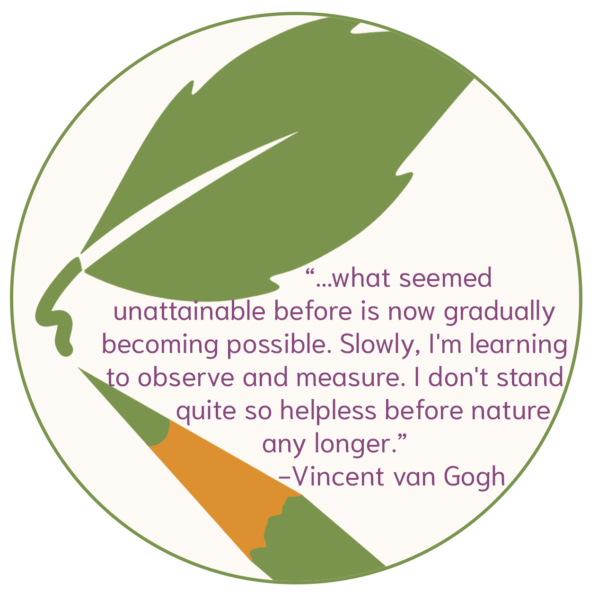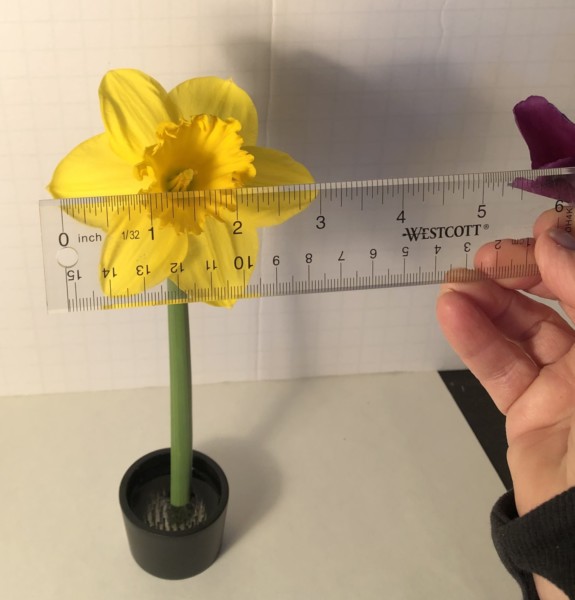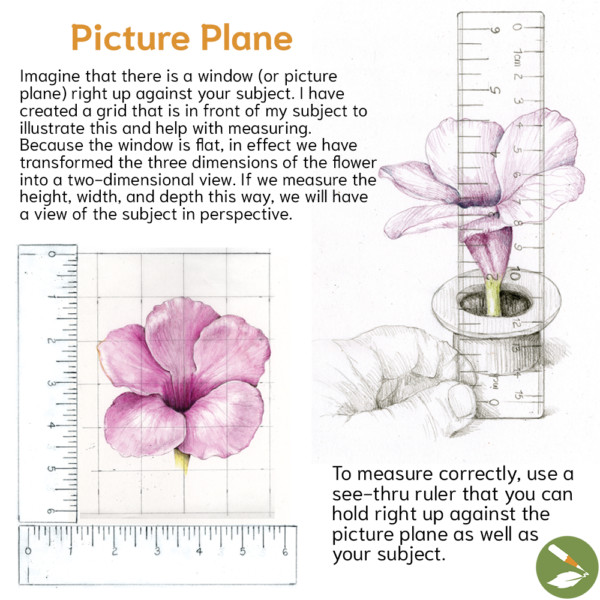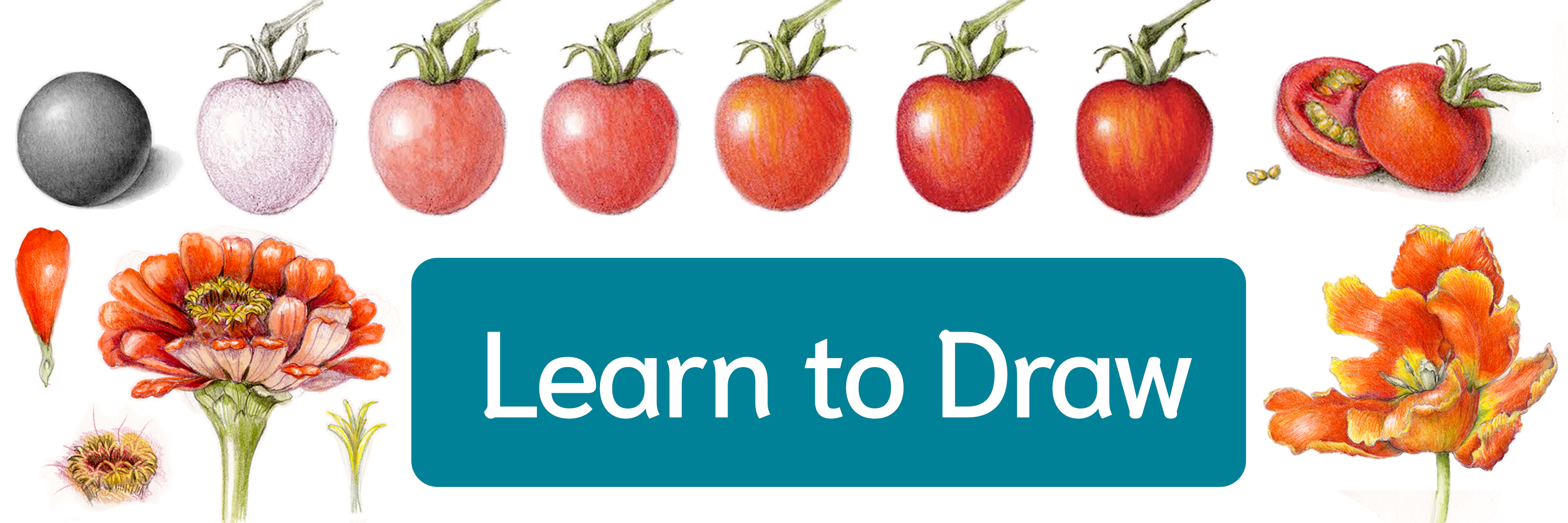
As artists, we are all familiar with the feeling of overwhelm that arises upon first look at a subject beside the vastness of a blank page.
How can we possibly capture the innate beauty that we see before us?

Observe and Connect
Before you start drawing, take a moment to observe, absorb, and process the sensory information you’re receiving from nature. Connect with the plant, and begin to understand the basic shapes that you see and their relation to each other. Taking this time to observe the simple shapes you see can become an access point into your blank page. This crucial moment of observation quells the initial overwhelm as you begin your conversation with the plant and start to perceive how the plant wants you to capture it. Listen… with your eyes.
(Don’t think plants can talk? Well, you’d be right that they can’t speak English or any formal spoken or written language, but the cool thing about botanical drawing is that every artist’s perception is unique, so the same plant will inspire dramatically different results because the plant emphasized different aspects to different people.)

Alleviate Anxiety
Start your practice by receiving information from your specimen, so that you perceive what will go on the page. This moment of observation at the beginning of a drawing session can help alleviate anxiety and build confidence, turning “Oh no, I couldn’t possibly draw this complex subject!” into ”I can easily draw that sphere and cone, no problem!” The next thing you know, you’ve hit the ground running and are excitedly adding more details!

Measuring
In addition to observation, measuring is another great way to begin a drawing and overcome those feelings of uncertainty. In botanical illustration, measuring helps us to create accurate, realistic representations of the plants we see, but it can also help us build confidence in our skills. The act of measuring introduces a concrete, objective component into our practice: numbers. (We rely on a see-through ruler for accurate measurements.) In an art field that often feels reliant on “creativity” and “innate talent,” measuring can be a nice point of entry for anyone, regardless of expertise. As you begin your drawing, try to answer simple questions like, “How wide is it?” “How far from the stem does that petal begin?” “Will this even fit on my paper?”
Sometimes the helpless feeling comes when you’ve begun but something in your initial graphite sketch doesn’t look right. Check your measurements and make adjustments at the beginning stages of a drawing so that you can feel confident moving forward with a drawing that looks realistic and correct from your point of view. Measuring is a useful tool if you follow our method.

Imagine there is a piece of glass perpendicular to your table that touches your subject at its closest point to you. (Some artists imagine that there is a grid drawn on that piece of glass). This is the “window” that can help you translate your 3D subject into a 2D drawing. Be careful not to tilt your ruler and “break” the picture plane. If you practice these techniques, what once seemed unattainable may become possible!
Want a more in-depth look at measuring? Check out this video on measuring and flower shapes!



